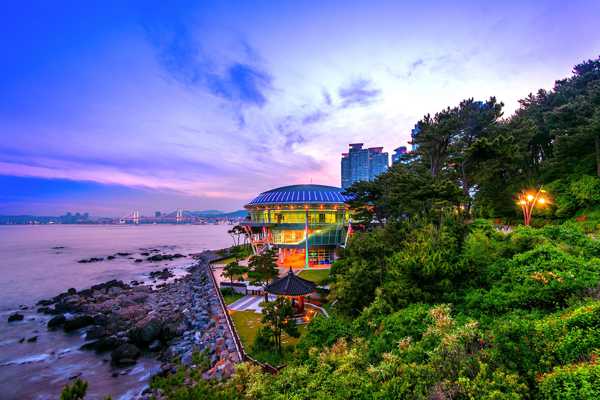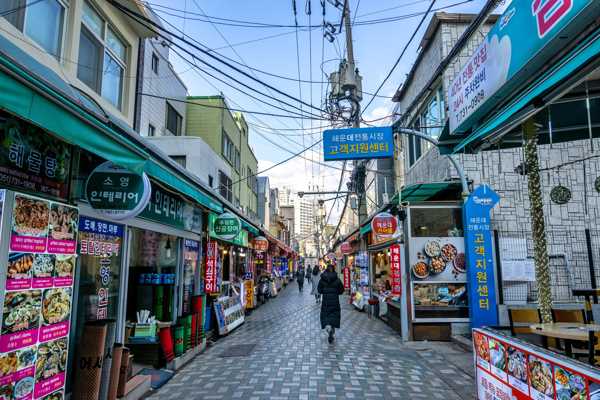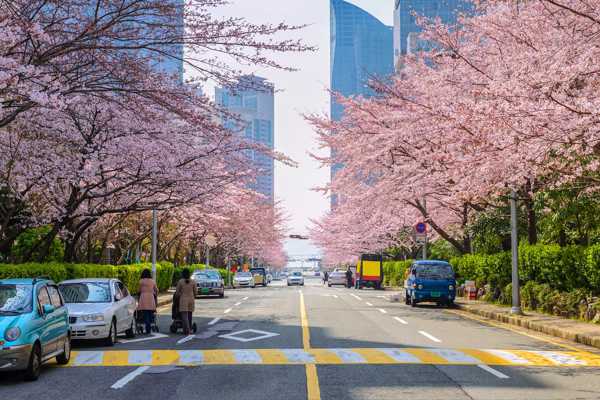Iconic buildings and places in Busan holding diverse historical values. From Haedong Yonggungsa Temple where you can have one earnest wish granted, to Gamcheon Culture Village, which is a village formed by refugees and religious people reborn as an exotic cultural site, Gyeongju Historic Areas preserving the thousand-year history of Silla, Seokbulsa Temple located in between gigantic rocks, Geumjeongsanseong Fortress symbolizing the ironclad will to protest against foreign powers, Beomeosa Temple that produced a number of eminent priests of high virtue, Cheonmachong Tomb where you can get a glimpse of the splendid lifestyle of the ruling class of Silla, and the Forest of Legend set on mythologies, the list goes on and on.
Try visiting historical sites that shine with age. Travel back in time and feel the era, a world apart from where we live today. Feel the history that breathes alive in sites where the past and present coexist.
- 1
Haedong Yonggungsa Temple
A seaside temple where your wish will be granted
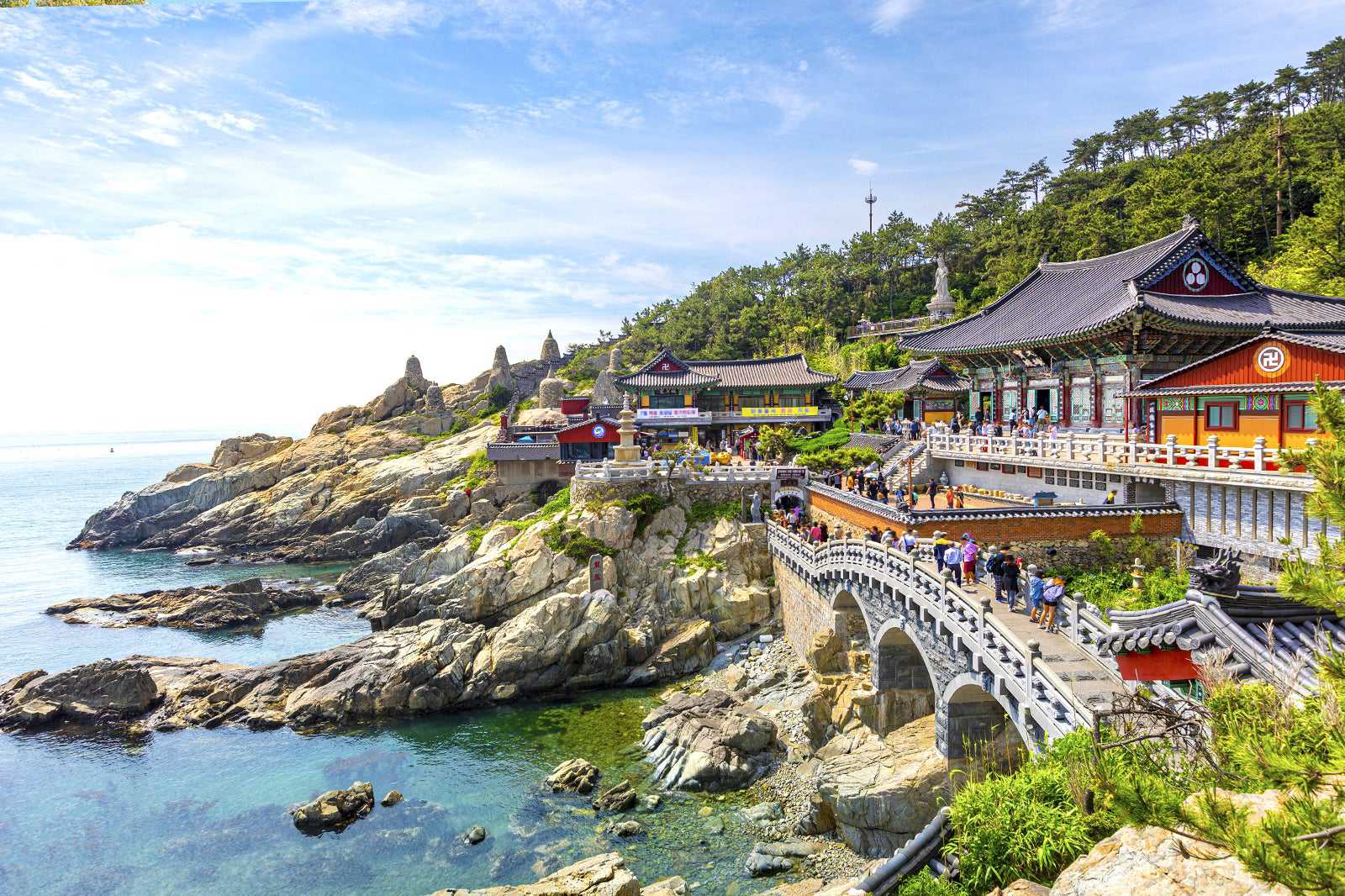
- Sejarah
- Foto
Haedong Yonggungsa Temple is believed to be a place where anyone is granted one wish through an earnest prayer. That's why the Buddhist temple has continuously attracted many worshipers from across the nation. While Buddhist temples are usually situated in mountains, Yonggungsa is located on the seaside. The motifs of the sea, the dragon, and the Bodhisattva of Great Compassion represented in different parts of the temple deliver a profound religious message.
At the end of a pathway lined with the statues of Twelve Zodiac Animal Deities, you reach the 108-step stairs that are guarded by the statue of the semi-legendary Chinese monk Budai. It is believed that women can give birth to a son by touching the belly of the statue. The statue of Ksitigarbha, a bodhisattva who saves souls condemned to hell, stands tall on Ilchuram Rock. Every year, a ceremony of bringing fish back to the sea is held on this rock. Surrounded by the beautiful scenery of this temple facing the blue sea, empty your busy mind and pray that your dreams come true.
Lokasi: 86, Yonggung-gil, Gijang-eup, Gijang-gun, Busan, Republic of Korea
Buka: Daily from 5 am to 7 pm
Telepon: +82 (0)51-722-7744
Peta - 2
Gamcheon Culture Village
An art village with impressive structures and alleyways
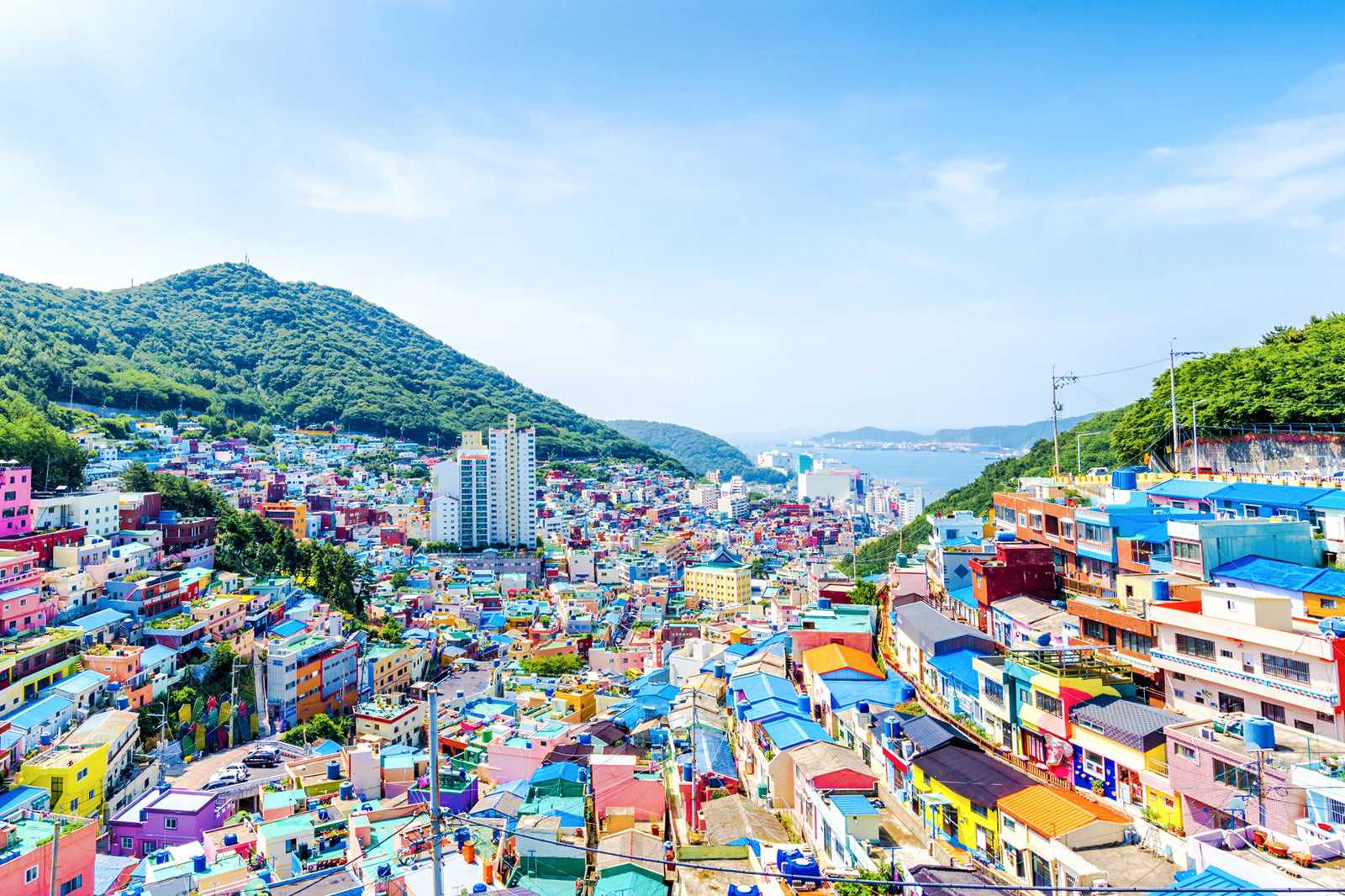
- Budget
- Sejarah
- Foto
Gamcheon Culture Village was formed by refugees who were forced to leave their hometowns due to the Korean War, but it is now an art village attracting many tourists with its unique structures and alleyways. Located in Saha-gu, Busan, the village has been transformed through an urban regeneration project into the "Santorini" of Korea. At the time when the project launched, the village, which began as a community of war refugees and believers of Taegeukdo (a native religion of Korea), was going downhill due to the decrease in population. The project turned the village into a space where artists are able to carry out their creative activities, and this change led to an increase in residents and tourists.
The unique scenery of the village is attributed to its terraced structure developed along the mountain ridges and its interconnected alleyways. As an art-friendly tourist destination, the village not only provides a variety of experiences and attractions, but also presents an atmospheric nightscape harmonized with numerous works of art.
Lokasi: 200, Gamnae 1-ro, Saha-gu, Busan, Republic of Korea
Buka: Daily from 9 am to 6 pm
Telepon: +82 (0)51-204-1444
Peta - 3
Gyeongju Historic Areas
Historic sites that preserve the remains of the capital of Silla
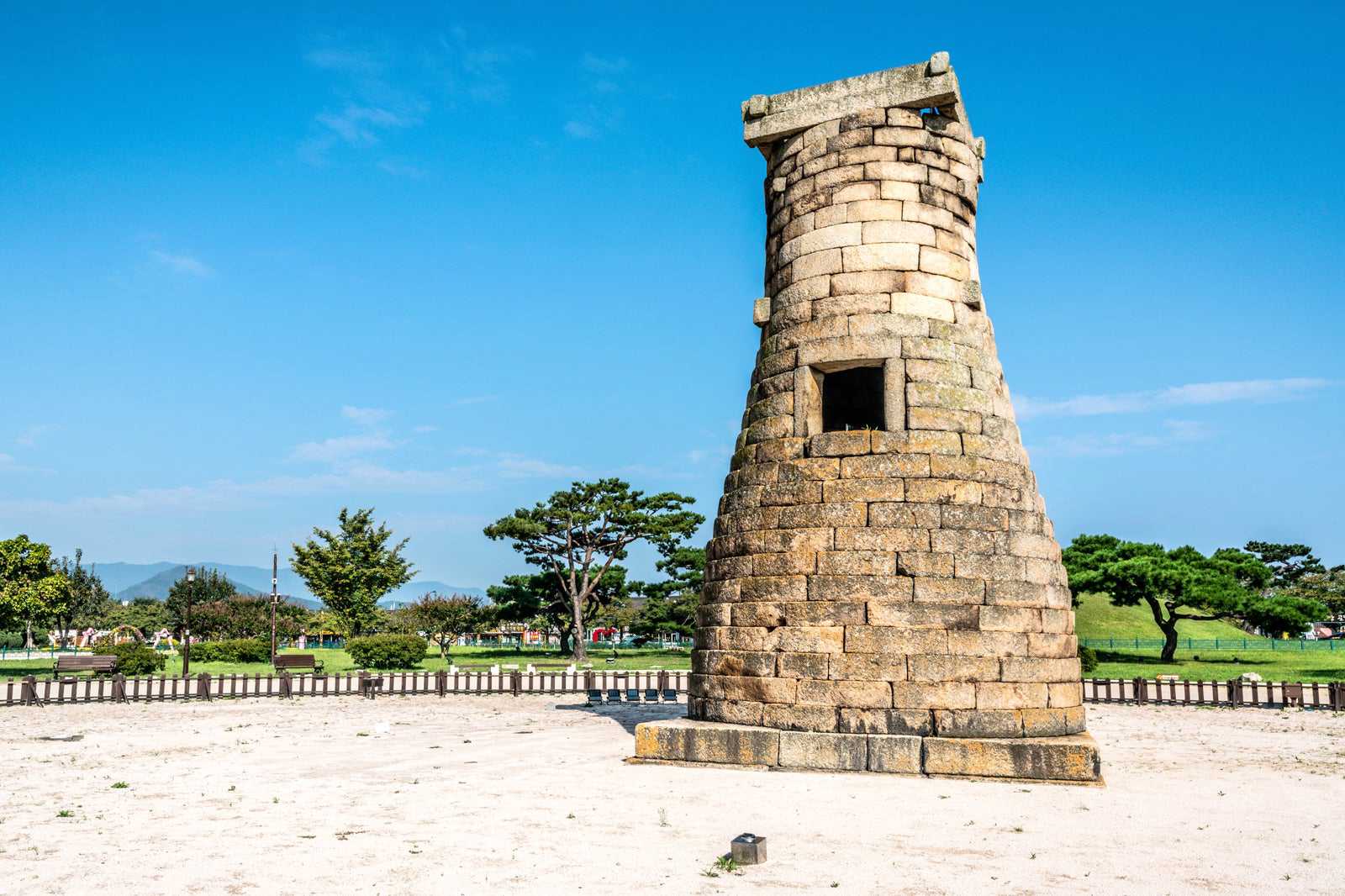
- Sejarah
- Foto
The Gyeongju Historic Areas retain the history and culture of Gyeongju, a city that had been the capital of the ancient kingdom of Silla for thousands of years. The areas, designated as a UNESCO World Heritage Site in December 2000, are divided into five districts according to the nature of the ruins they preserve. The five districts include: Namsan District, a treasure trove of Buddhist art; Wolseong District, the site of the royal palace of Silla; Daereungwon District with a group of tombs including the king's; Hwangnyongsa District showcasing the essence of Silla's Buddhist culture; and Sanseong District where the ancient capital's defensive facilities are concentrated.
The Gyeongju Historic Areas provide a chance to look into the outstanding artistry and daily culture of Silla. Gyeongju was a city comparable to the capitals of the Byzantine Empire, Islamic Empire, and Tang Dynasty in terms of the scale and level of prosperity, and still preserves the traces of the glorious history and culture. Indulge in the historic, elegant atmosphere of Gyeongju while taking a tour of its historic sites.
Lokasi: Hwangnam-dong, Gyeongju-si, Gyeongsangbuk-do, Republic of Korea
Peta - 4
Seokbulsa Temple
A unique temple surrounded by rocks
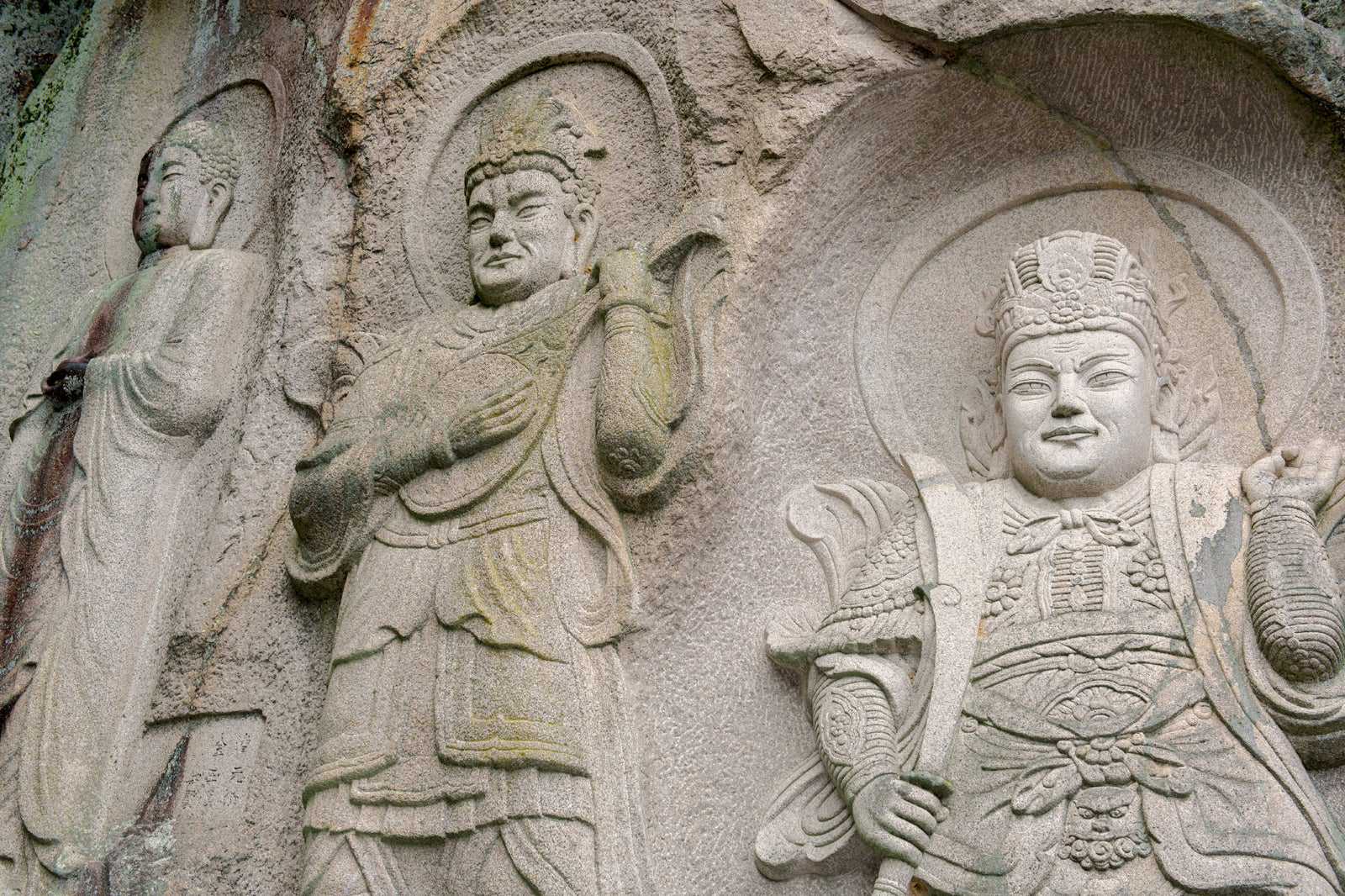
- Sejarah
- Foto
Seokbulsa Temple features a unique atmosphere that is hard to find in other Buddhist temples, mainly because of huge natural rocks that surround its buildings and its entrance connecting the basement and the ground. Also, the statues of Buddha carved out of the towering rocks are definite eye-catchers. They add to the mysterious impression of the temple, as they are carved into the natural rocks surrounding the temple. In fact, these statues are the origin of the temple's name "Seokbulsa" (meaning "stone Buddhas") and its nickname "Byeongpungam" (meaning "folding screen rocks").
Compared to other temples and hermitages on Geumjeongsan Mountain, Seokbulsa has a shorter history (80 years) and is quite smaller in size, but it is a place that attracts many tourists with its beautiful scenery. Free yourself from your worldly worries for a moment, listening to the sounds of a wooden percussion as monks offer prayers.
Lokasi: 143-79, Mandeokgogae-gil, Buk-gu, Busan, Republic of Korea
Buka: Daily from 7 am to 4.30 pm
Telepon: +82 (0)51-332-1690
Peta - 5
Geumjeongsanseong Fortress
A historic site symbolizing the Korean people's spirit of resistance
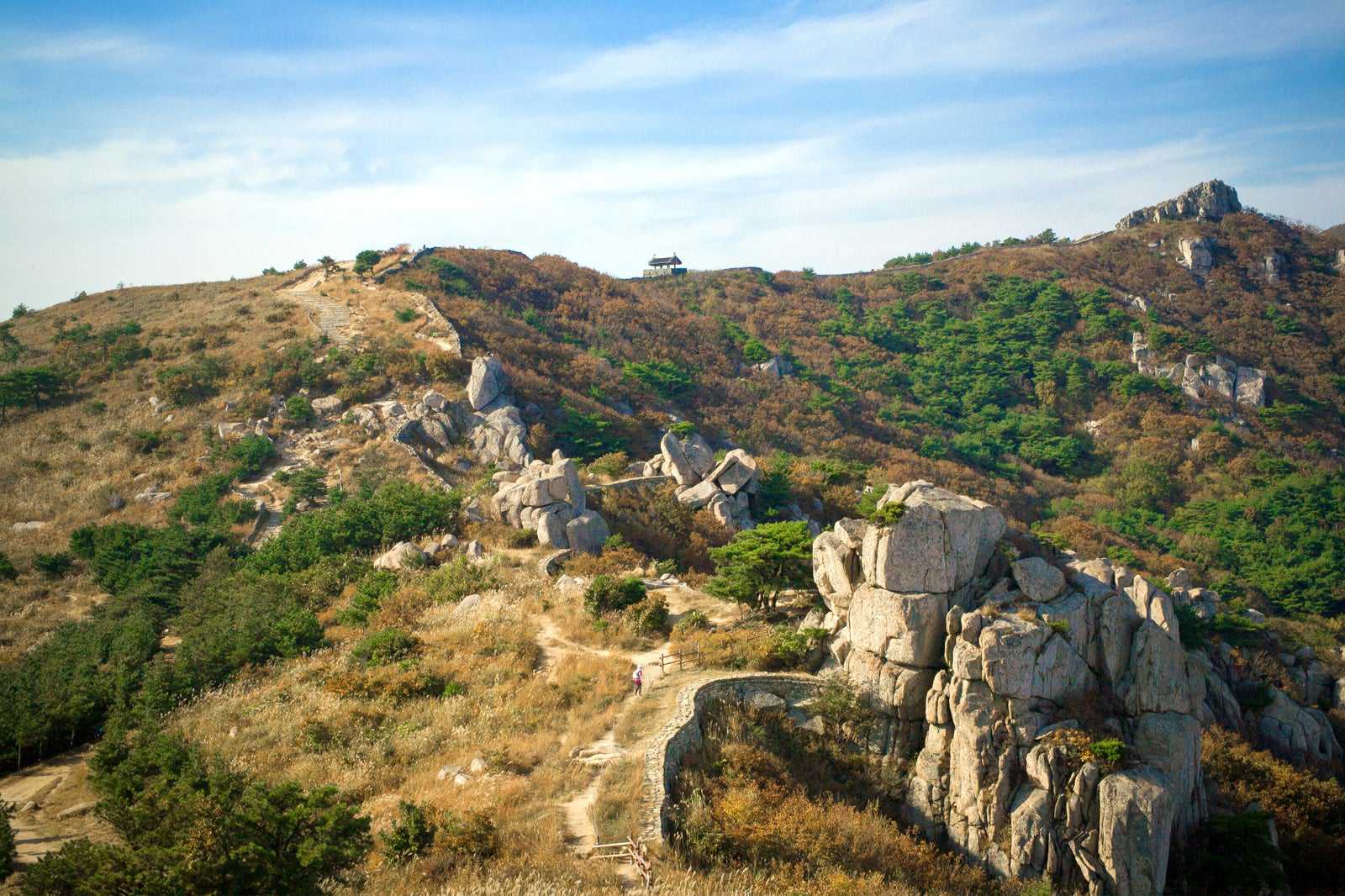
- Petualangan
- Budget
- Sejarah
Geumjeongsanseong Fortress, one of the largest remaining fortresses in Korea, preserves the traces of a long history of resistance against foreign powers. The fortress, when it was first built, boasted a huge scale with towering gates in all directions. Although the exact year of construction is unknown, it is assumed that construction of the fortress started during the Three Kingdoms period and was rebuilt during the Joseon Dynasty. The fortress served as a stronghold of the Korean Peninsula during the Imjin War (1592-1598) and witnessed the Korean people's fierce resistance against invasion and the nation's long history of ordeals.
Strolling along the fortress against the backdrop of a beautiful mountainscape, you can feel the courage and patriotism of ancient Koreans who fought to the end against the enemies. From the top of the fortress, you can see the calmly flowing Nakdonggang River and the vast Gimhae Plain. Visit Geumjeongsanseong Fortress, which creates a unique lyrical atmosphere in harmony with the surrounding landscape and explore the old traces of Busan.
Lokasi: 78-5, Bungmun-ro, Geumjeong-gu, Busan, Republic of Korea
Telepon: +82 (0)51-517-5527
Peta - 6
Beomeosa Temple
A prestigious temple with a thousand years of history
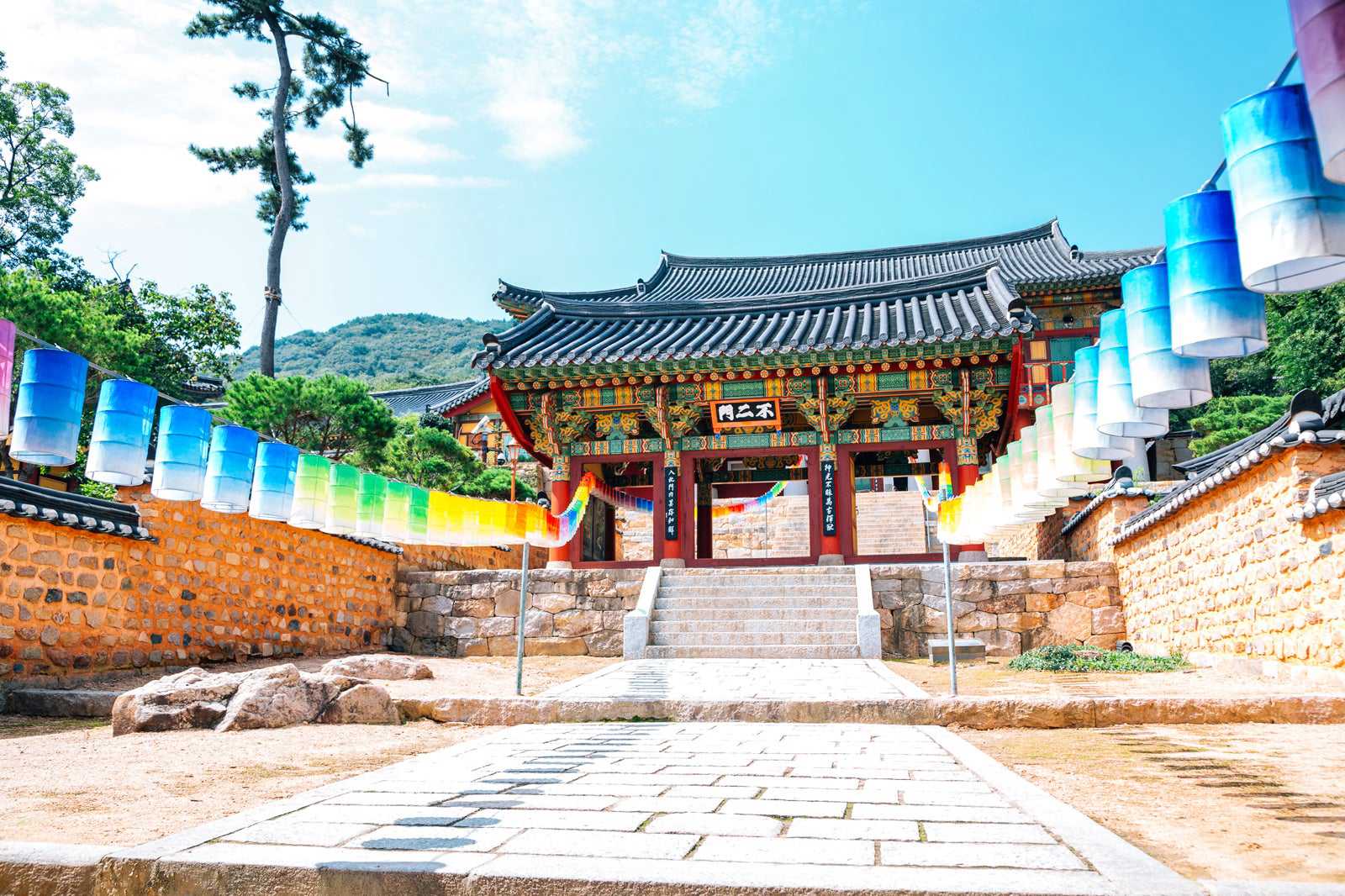
- Budget
- Sejarah
- Foto
Located on the hillside of Geumjeongsan Mountain, Beomeosa is a temple with a long history that has held onto its legacy for over a thousand years. As a temple visited by numerous monks for the practice of asceticism, it has historically produced many high-rank priests. The temple is also home to many important cultural assets. Since its foundation in the 7th century, Beomeosa Temple thrived until being reduced to ruins during the Imjin War (1592-1598) and then destroyed once again by fire after reconstruction; however, throughout these ordeals, the temple has maintained its status as a prestigious Buddhist monastery of the region.
The temple has extended its social welfare and educational programs as well as various Buddhist ceremonies to spread and practice the teachings of the Buddha in the local community. It is also famous for its temple stay program where participants can experience daily life in a temple and have time for self-reflection by escaping the hustle and bustle of busy modern life. Spend a peaceful time in this quiet, beautiful temple to look into your mind and find your true self.
Lokasi: 250, Beomeosa-ro, Geumjeong-gu, Busan, Republic of Korea
Telepon: +82 (0)51-508-3122
Peta - 7
Cheonmachong Tomb
A beautiful tomb providing a glimpse into the lives of Silla's ruling class
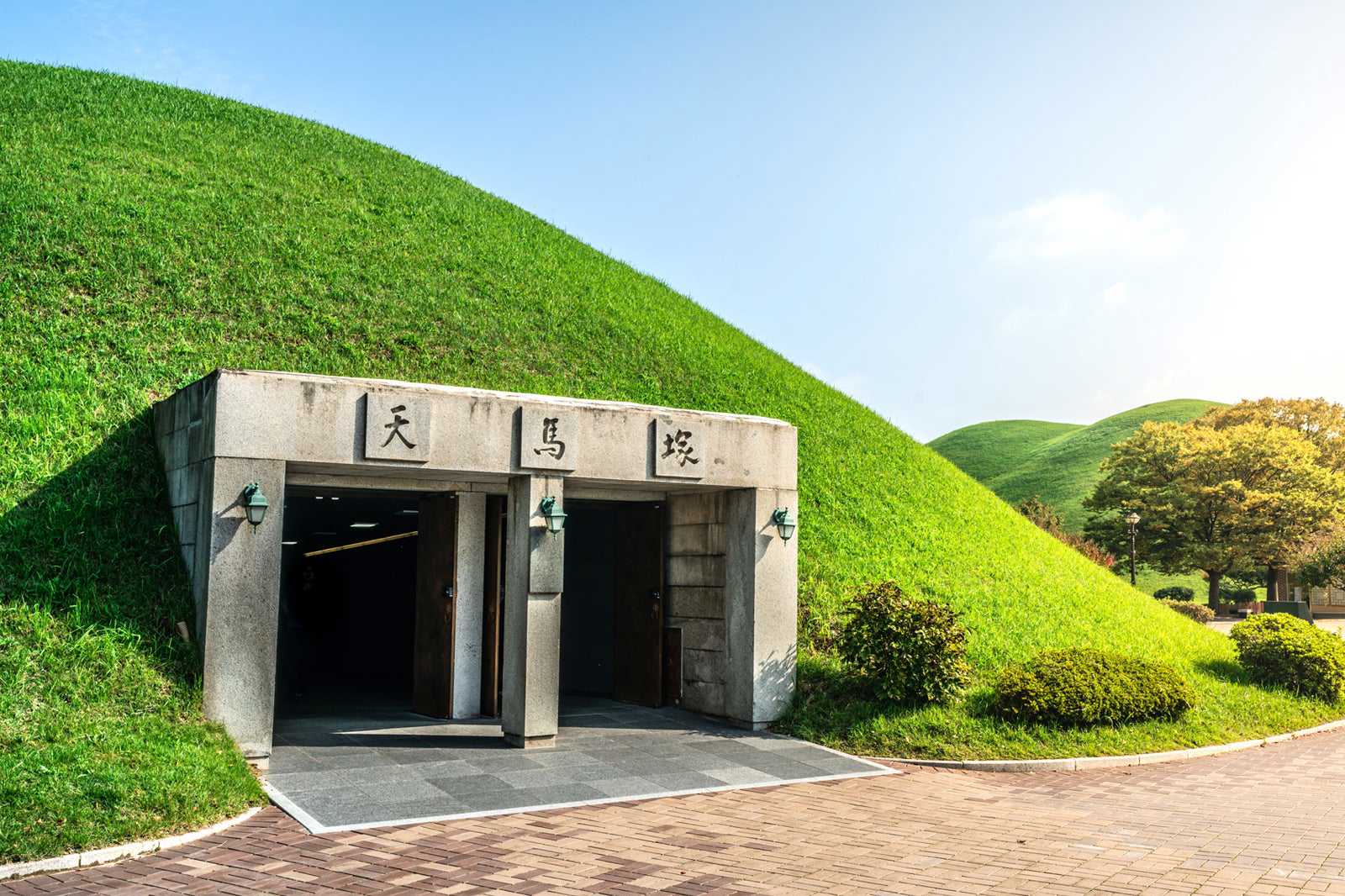
- Sejarah
- Foto
Cheonmachong is a huge tomb presumed to be the burial site of King Jijeung, the 22nd ruler of Silla. Excavated in 1973 with numerous burial items including a Cheonmado sword and gold crowns and hats, the tomb was named after its mural painting of a white horse ascending to the sky. Cheonmachong is the only tomb of Silla where the interior chamber is open to the public.
The tomb provides a glimpse into the everyday lives and set of values of the people of Silla. Despite many academic studies, some of the secrets of this tomb remain unveiled. Take a tour of Cheonmachong that has recently been restored close to its original form to explore its historical value and get insights into the lives of the ruling class of Silla who enjoyed the time of great abundance. After the tour, you can relax in the nearby park taking in the beautiful scenery.
Lokasi: 262, Hwangnam-dong, Gyeongju-si, Gyeongsangbuk-do, Republic of Korea
Buka: Daily from 9 am to 10 pm
Telepon: +82 (0)54-750-8650
Peta - 8
Gyerim Forest
A legendary forest featured in the myth of Kim Al-ji
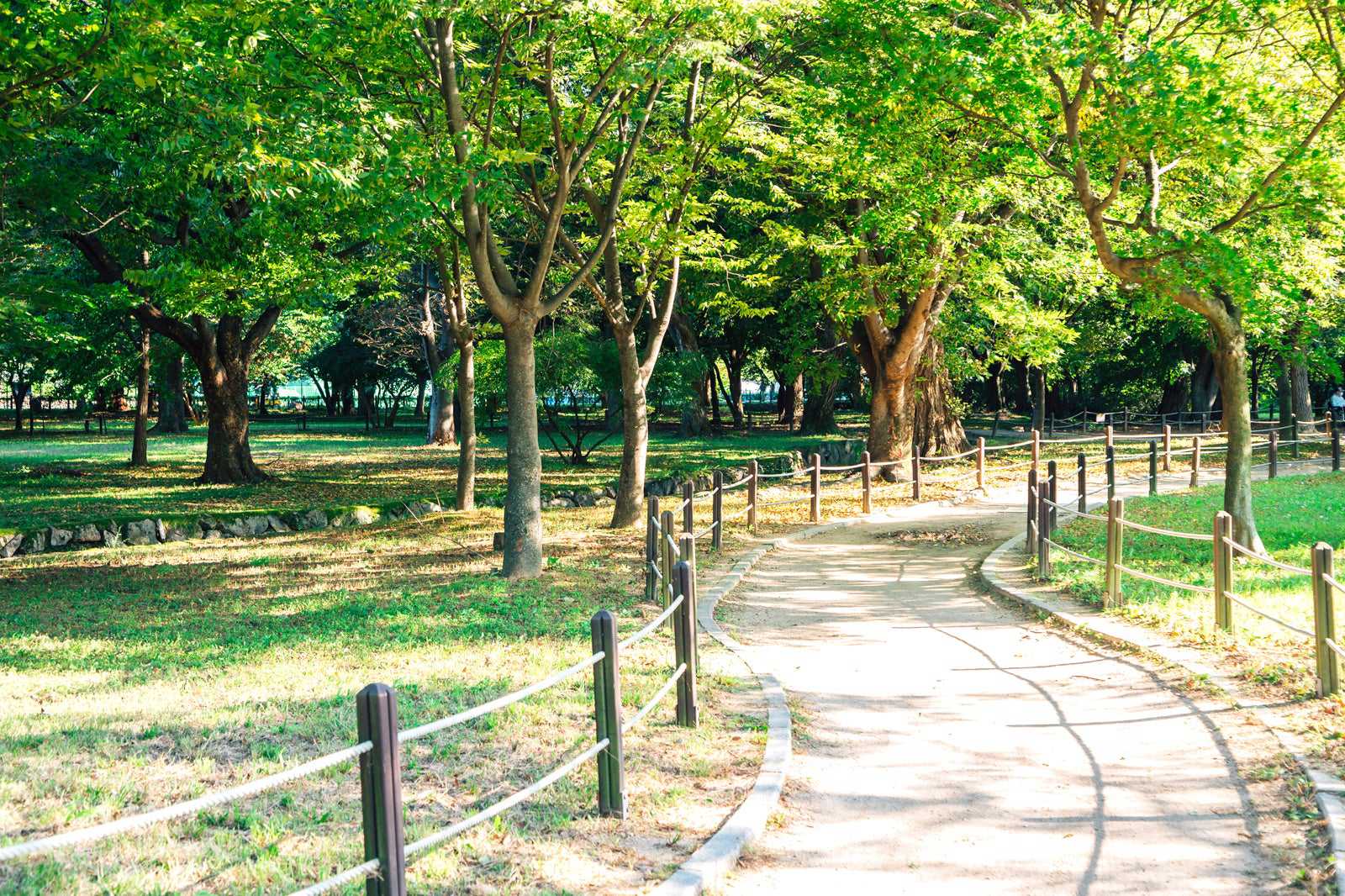
- Budget
- Sejarah
Gyerim Forest, located halfway between Banwolseong Fortress and Cheomseongdae Observatory, is a forest that has existed since the founding of Silla, featured in the birth myth of Kim Al-ji, the progenitor of the Gyeongju Kim clan. Although the forest is quite small, it retains its original state with many well-preserved old trees. According to the myth, King Talhae of Silla heard a rooster crowing in this forest and sent his servants to investigate. They found a golden chest hanging on a tree branch. Inside the chest, there was an infant. It is said that child was Kim Al-ji, the progenitor of the Gyeongju Kim clan. Gyerim, the setting for this myth, has been considered a sacred forest.
The forest boasts a fascinating view especially in spring when mustard flowers are in full bloom and in autumn when the leaves of tall, large trees such as willow, zelkova, and maple trees turn red and yellow. Being close to Cheomseongdae Observatory, Gyeongju Eastern Historic Site, and Banwolseong Fortress, the forest is an easily accessible place you can explore with other historic sites. Experience the sense of awe in this sacred forest, where lush leaves cover the sky.
Lokasi: 1, Gyo-dong, Gyeongju-si, Gyeongsangbuk-do, Republic of Korea
Peta - 9
Yeongdo Lighthouse
A lighthouse commanding the full view of Taejongdae
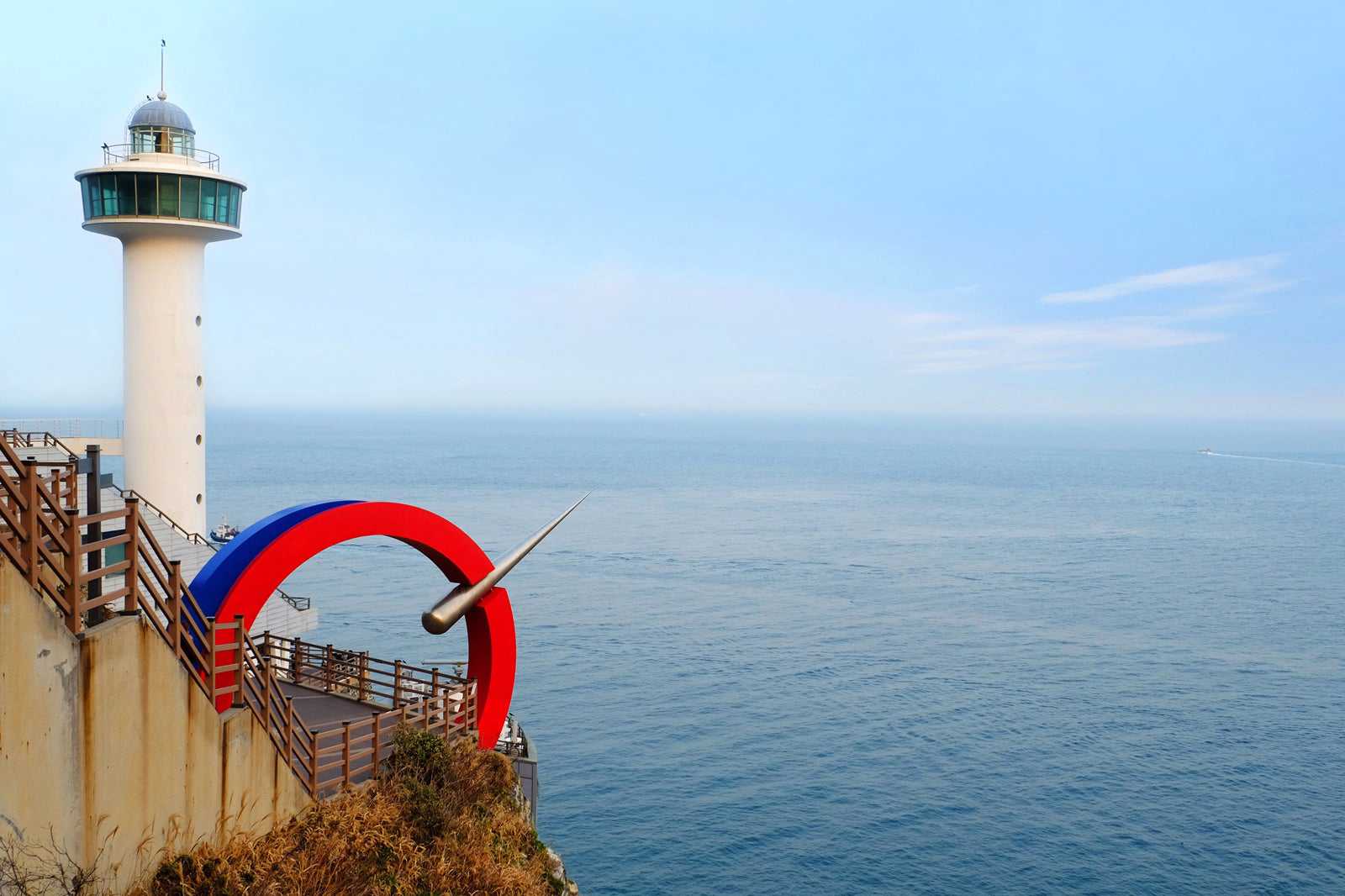
- Sejarah
Yeongdo Lighthouse, located in Taejongdae, Busan, has been a guide for ships on the way to Busan Port for over 100 years since its completion in December 1902. Through the recent extension work, the lighthouse has been turned into a complex space consisting of a lighthouse facility, an art exhibition hall, and a natural history museum. The exhibition hall is used to present various works of art to visitors, while the natural history museum displays dinosaur fossils found in the area.
Passing through the entrance to Yeongdo Lighthouse and going up the stairs, you can reach its top and have a full view of Taejongdae. On a clear day, even Tsushima Island can be seen as well as Jujeonjaseom and Dongbaekseom Islands. If you visit Taejongdae at night, you can see Yeongdo Lighthouse lit up. The beautiful night view with the light of the lighthouse that keeps ships safe will bring peace to your heart.
Lokasi: 181, Jeonmang-ro, Yeongdo-gu, Busan, Republic of Korea
Buka: Tuesday–Sunday from 9 am to 6 pm
Telepon: +82 (0)51-405-1201
Peta - 10
Busan Modern History Museum
A treasure trove of modern cultural and historical heritages
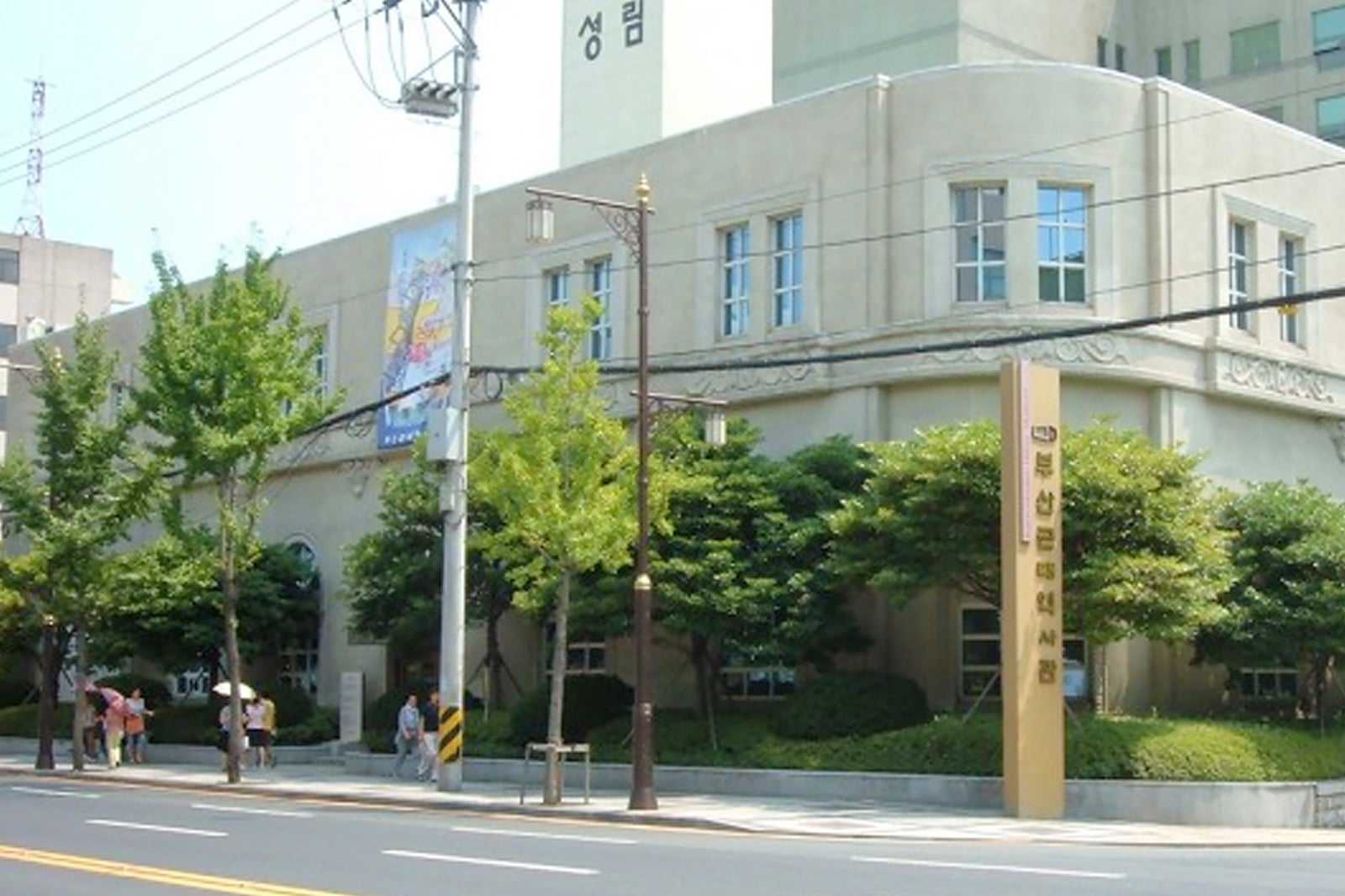
- Sejarah
- Foto
The Busan Modern History Museum collects and displays modern and contemporary historical assets of Busan, providing citizens with education and experience about the history related to these assets. It is a place where you can get a glimpse of the city's modern history marked by multiple foreign invasions. The museum is housed in one of the Western-style buildings built during the Japanese occupation, which highlights the historicity of the building.
The permanent exhibition sheds light on the modern history of Busan plagued by foreign invasion and exploitation under the three main themes of "Busan during the port opening era," "Japanese occupation of Busan," and "modern city of Busan." There are also various attractions to see including the "Modern Street of Busan" exhibition hall featuring replicas of a tram and Daecheong-dong Street that was the city centre during the modern era. You can get insights into generations of efforts to overcome the tragic history and restore the city into what it is today.
Lokasi: 104, Daecheong-ro, Jung-gu, Busan, Republic of Korea
Buka: Daily from 9 am to 6 pm
Telepon: +82 (0)51-253-3845
Petafoto dari Katsura Roen (CC BY-SA 3.0) dimodifikasi















